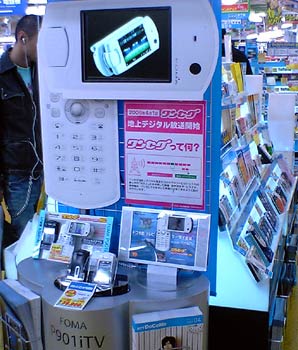 A recent report focusing on the faltering Korean DVB-H market lead us to wonder how the user experience, and business model, compares with the service launched here in Japan on April 1st. Several items stand out as either very similar or completely opposite.
A recent report focusing on the faltering Korean DVB-H market lead us to wonder how the user experience, and business model, compares with the service launched here in Japan on April 1st. Several items stand out as either very similar or completely opposite.
Many studies over the years point to the fact that mobile user habits vary much less from region to region than assumed by most industry pundits. Of course there are at least some notable differences, however – by and large – people are people, and in-depth research has routinely shown common ground across cultures and classes.
The predictable differences become more apparent as business models are implemented that encourage, or restrict, access or behavior in any given product or service offering. The cost and availability – let alone need – of any new mobile initiative will obviously have an impact on its adoption rate.
When digital TV for mobile (1SDB-T) debuted here this spring, the business model had several notable features: all channels are free to view and the broadcast content is exactly the same as already available – also at no cost – on users’ home TV sets.
While many have questioned the logic of this seemingly non-profit (yet costly) experiment, the ministry, carriers and broadcasters have carefully developed a strategic long-term vision for the successful deployment of mobile TV in Japan.
One thing is for sure: the hype surrounding this next-gen area knows no borders and markets overseas are also struggling with the myths and realities of this segment’s risks and opportunities.


 A recent
A recent